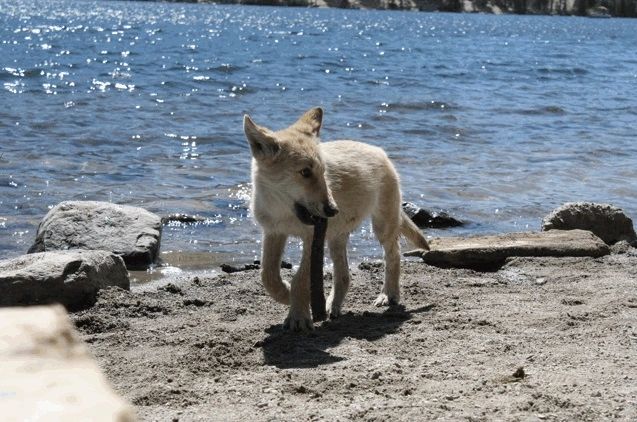
They live in close ties with the members of their pack, communicating with each other through a wide variety of calls, including barks, whines, howls, and growls. The alphas are the leaders of the pack, establishing the group's territory, selecting the den sites, tracking down, and hunting prey.

An average wolf pack consists of 7-8 individuals, including the alpha male and female with their young as well as older offspring. It does not store any personal data.Grey wolves are social animals, living, hunting, and traveling in packs. The cookie is set by the GDPR Cookie Consent plugin and is used to store whether or not user has consented to the use of cookies. The cookie is used to store the user consent for the cookies in the category "Performance". This cookie is set by GDPR Cookie Consent plugin. The cookie is used to store the user consent for the cookies in the category "Other. The cookies is used to store the user consent for the cookies in the category "Necessary". The cookie is set by GDPR cookie consent to record the user consent for the cookies in the category "Functional". The cookie is used to store the user consent for the cookies in the category "Analytics". These cookies ensure basic functionalities and security features of the website, anonymously. Necessary cookies are absolutely essential for the website to function properly. Recent extreme weather variations have made finding food more difficult for Arctic hares and musk-oxen to find food, causing their numbers to decline significantly, and therefore affecting this traditional food supply for the Arctic wolf. Why are the numbers of Arctic wolves declining? Breeding takes place in winter from January to March. Arctic wolves are a monogamous species and the alpha male and beta female are the only ones that are allowed to mate. They also eat Arctic hares, lemmings, ptarmigan, and other small animals, such as nesting birds. What kind of animals do Arctic wolves eat? Machine learning and custom detection rules then deliver personalized protection for your organization. The platform collects and enriches endpoint, network, and cloud telemetry, and then analyzes it with multiple detection engines. Spanning thousands of installations, the Arctic Wolf ® Platform processes over 200 billion security events daily. How many security events does Arctic wolf detect? During the winter, these wolves grow a second layer of fur to protect themselves against the cold. The Arctic wolf can cope with sub-zero temperatures as well as 5 months of total darkness each year. How does the Arctic Wolf Survive in the winter?Īrctic wolves travel much further than wolves of the forest when looking for food, and they sometimes do not eat for several days. Some leeches are scavengers, feeding on the remains of dead animals and plants. Canids, members of the dog family like Arctic foxes, are also frequent scavengers on the tundra.Īre there any blood-sucking leeches in New Hampshire? Most leeches are predaceous, feeding on worms, snails, fish eggs, and aquatic insects. The most common are birds like ravens and gulls. Any animal that eats meat can be a scavenger, but some are specialists. What is a scavenger in the Arctic?Īrctic decomposers also include larger, scavenging animals.

Carnivores are animals that hunt and eat other animals. Wolves are primarily carnivores but will scavenge if necessary.


 0 kommentar(er)
0 kommentar(er)
